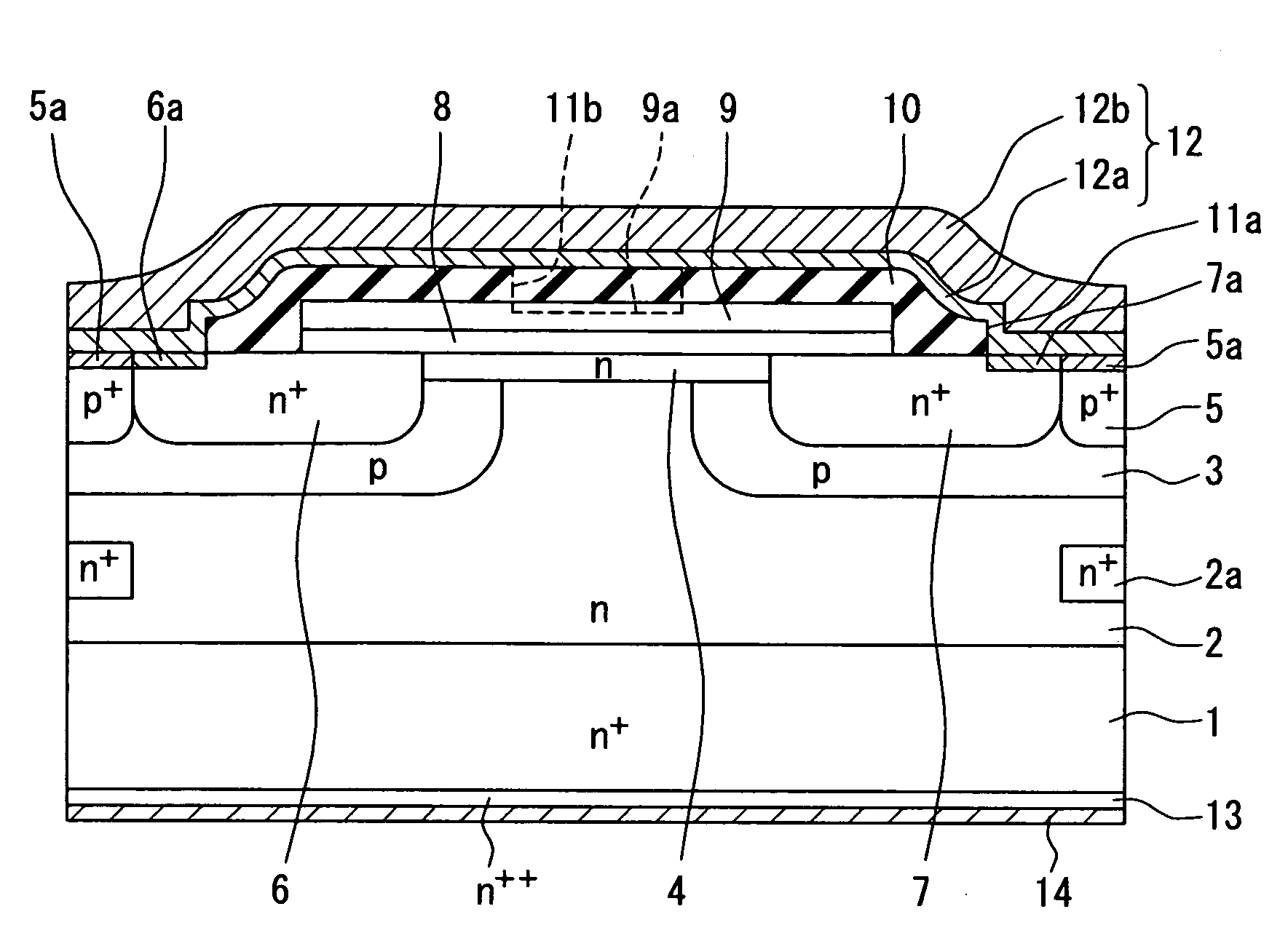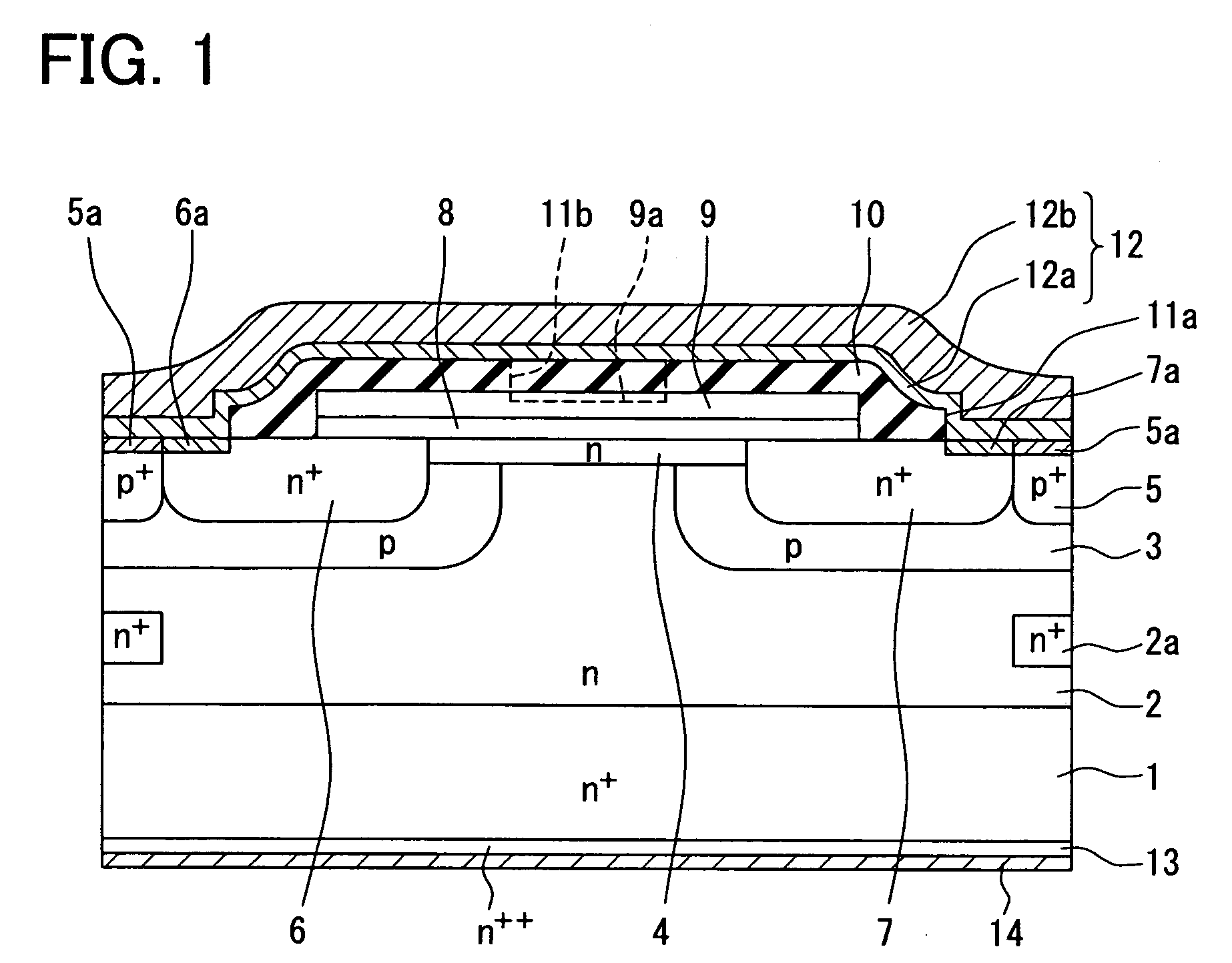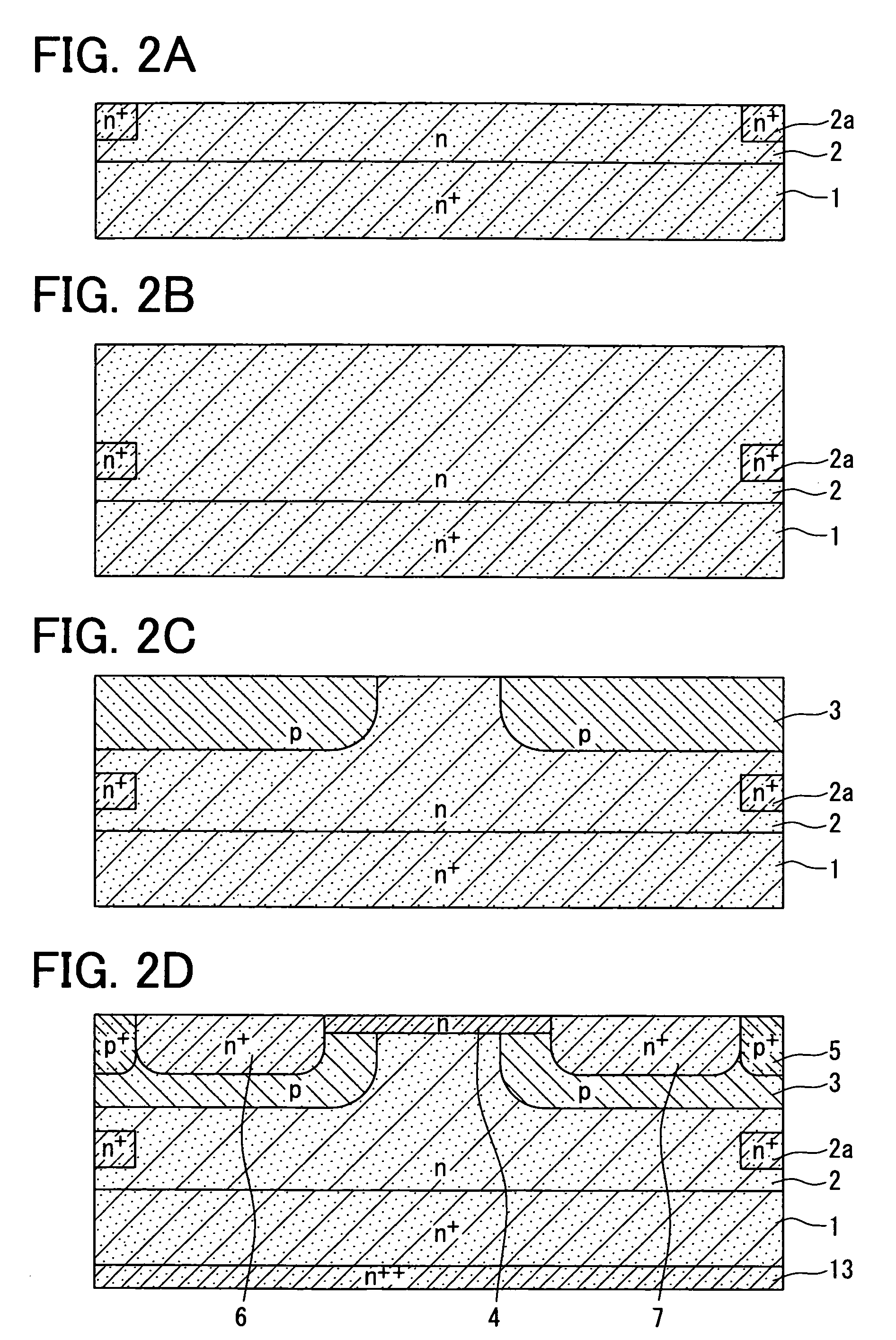Silicon carbide semiconductor device
a silicon carbide and semiconductor technology, applied in the direction of semiconductor devices, basic electric elements, electrical appliances, etc., can solve the problems of difficult to form a p type, difficult to absorb surge energy, and difficult diffusion process widely used in silicon device manufacturing, etc., to achieve the effect of improving the surge resistan
- Summary
- Abstract
- Description
- Claims
- Application Information
AI Technical Summary
Benefits of technology
Problems solved by technology
Method used
Image
Examples
first embodiment
[0035]A first embodiment is explained below. In the present embodiment, an SiC semiconductor device including a planer MOSFET is presented. A configuration of the planer MOSFET and a method of manufacturing the planer MOSFET are described below with reference to FIG. 1, FIGS. 2A to 2D, and FIGS. 3A to 3D. FIG. 1 is a cross sectional diagram illustrating the SiC semiconductor device having the planer MOSFET in accordance with the present embodiment. FIGS. 2A to 2D and FIG. 3A to 3D are cross sectional diagrams illustrating manufacturing processes of the planer MOSFET shown in FIG. 1.
[0036]As shown in FIG. 1, the planer MOSFET is formed by using a substrate 1. The substrate 1 is made of SiC, having an n+ conductivity type, and having a principal surface on one surface side. For example, the substrate 1 is made of 4H-SiC and have an impurity concentration of about 5×1018 cm−3. The substrate 1 has the principal surface on a-face, for example, on the (11-20) face.
[0037]An n type drift la...
second embodiment
[0064]A second embodiment is described below. An SiC semiconductor device having a planer MOSFET according to the present embodiment is different from that according to the first embodiment in a location of n+ type region 2a.
[0065]FIG. 4 is a cross sectional diagram illustrating the SiC semiconductor device having the planer MOSFET in accordance with the present embodiment. As shown in FIG. 4, each n+ type region 2a is located in the n type drift layer 2, located below the n+ type source region 6, 7, and spaced away from the p type base region 3. Functions of the n+ type regions 2a according to the present embodiment are substantially identical those according to the first embodiment. Effects according to the present embodiment are substantially similar to those according to the first embodiment.
[0066]A method for manufacturing the planer MOSFET according to present embodiment is provided when the following change is made in the method according to the first embodiment. The change ...
third embodiment
[0067]A third embodiment is described below. An SiC semiconductor device having a planer MOSFET according to the present embodiment is different from that according to the first embodiment in a location of an n+ type region 2a.
[0068]FIG. 5 is a cross sectional diagram illustrating the SiC semiconductor device having the planer MOSFET in accordance with the present embodiment. As shown in FIG. 5, each n+ type region 2a is located in the n type drift layer 2, and located below the contact region 5, as similar to the n+ type region 2a according to the first embodiment. In the present embodiment, the n+ type region 2a is in contact with the substrate 1 whereas, in the first embodiment, the n+ type region 2a is spaced away from the substrate 1. Functions of the n+ type regions 2a contacting the substrate 1 according to the present embodiment includes those according to the first embodiment. Effects according to the present embodiment include those according to the first embodiment. More...
PUM
| Property | Measurement | Unit |
|---|---|---|
| thickness | aaaaa | aaaaa |
| thickness | aaaaa | aaaaa |
| thickness | aaaaa | aaaaa |
Abstract
Description
Claims
Application Information
 Login to View More
Login to View More - R&D
- Intellectual Property
- Life Sciences
- Materials
- Tech Scout
- Unparalleled Data Quality
- Higher Quality Content
- 60% Fewer Hallucinations
Browse by: Latest US Patents, China's latest patents, Technical Efficacy Thesaurus, Application Domain, Technology Topic, Popular Technical Reports.
© 2025 PatSnap. All rights reserved.Legal|Privacy policy|Modern Slavery Act Transparency Statement|Sitemap|About US| Contact US: help@patsnap.com



